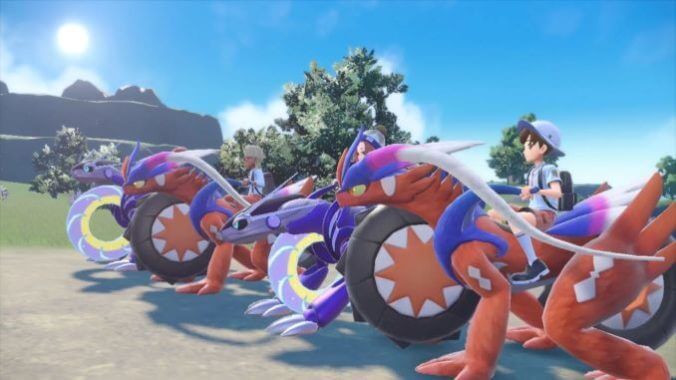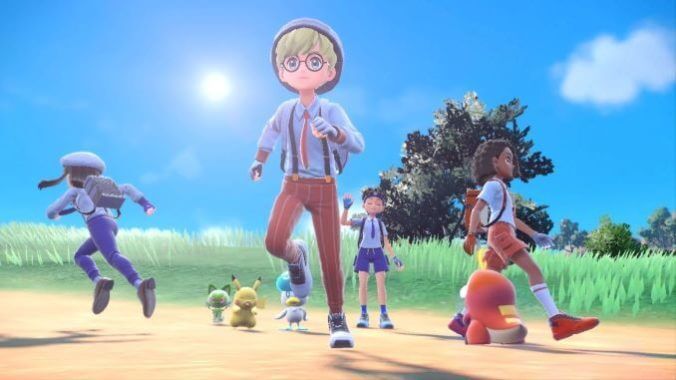The Pokémon Formula Might Be Running Thin, But Pokémon Scarlet and Violet Prove It Can Still Work

Imagine you’re at a drag race. Let’s say nine or so cars border the starting line. The starting gun fires and they’re off! One car’s parachute opens up immediately. Unable to look away from the unfolding chaotic failure, your gaze is locked on this red and purple automobile as it miraculously tears down the track, passing nearly every other participant. It doesn’t finish first, but it does clear a shockingly close third. Pokémon Scarlet and Violet are this dysfunctional underdog.
Although it’s held back by both groveling reverence to tradition and a bounty of technical issues, this pair defies towering odds to achieve more than most Pokémon games period. Warts and all, the ninth generation of Pokémon represents Game Freak, the Pokémon Company and their collaborators in near-peak form. Stellar monster designs, heartfelt storylines, memorable characters, well-placed doses of challenge and freedom, a spectacular score and smart innovations demanded my attention more than its myriad of bugs, unsightly visuals or performance issues ever did.
At the time of writing, Pokémon Scarlet and Violet are coming off of a thorough public flogging. And rightfully so; Pokémon is famously the most popular entertainment franchise in the world. Both fan and critical outcry hit such a fever pitch after Scarlet and Violet released that even buttoned-down, quiet Nintendo came out with an apology, promising that fixes for their worst bugs were on the way. Sword and Shield and Legends: Arceus were also technically challenged—chugging and visually underwhelming, though still playable. Scarlet and Violet, on the other hand, are the most egregious entries in the series to date when it comes to bugs.
Even as one of the “lucky” ones whose playthrough was relatively glitch- and crash-free, I was astounded by how poorly this game ran. Out of my nearly 200 Switch games, these ran the worst—even compared to games designed for more powerful hardware like Wolfenstein II or DOOM (2016). The most common performance issue I encountered was framerate drops, but in all, the performance issues and bugs in this game run the gambit. Characters will pop in and out of frame at random, collision bugs might keep your character from landing on the ground after a jump, items might despawn, bosses might not let you interact with them, Pokémon might clip through the world in a battle, and textures on the walls twist and shift in a psychedelic manner.
Whether I was laughing with a friend’s flashback to a bygone trip or at a Pokémon just exiting its digital plane of existence, most of these bugs elicited a laugh and nothing more. Some bugs, namely the framerate and magically vanishing monsters (among others), did negatively impact my experience. Sometimes I felt motion sick from the choppy framerate and shifting textures ganging up on my eyes. Other times I couldn’t catch a rare Pokémon because it just up and left.
Despite these deep-rooted technical issues, Scarlet and Violet are excellent Pokémon games. Even their weak points have some merit. Just as it did in Kanto nearly 30 years ago, starting out your adventure in Paldea means choosing between three adorable creatures, meeting a rival trainer and a professor in a small town. But as events unfold, more and more signs point to this game being special. Quality of life improvements and a dazzling soundtrack show up first. Then the game’s stakes and goals make themselves known before all of this Spain-inspired region open up for you to explore. All along the way creative new Pokémon dot your path to be the very best.

-

-

-

-

-

-

-

-

-

-

-

-

-

-

-

-

-

-

-

-

-

-

-

-

-

-

-

-

-

-

-

-

-

-

-

-

-

-

-

-








































